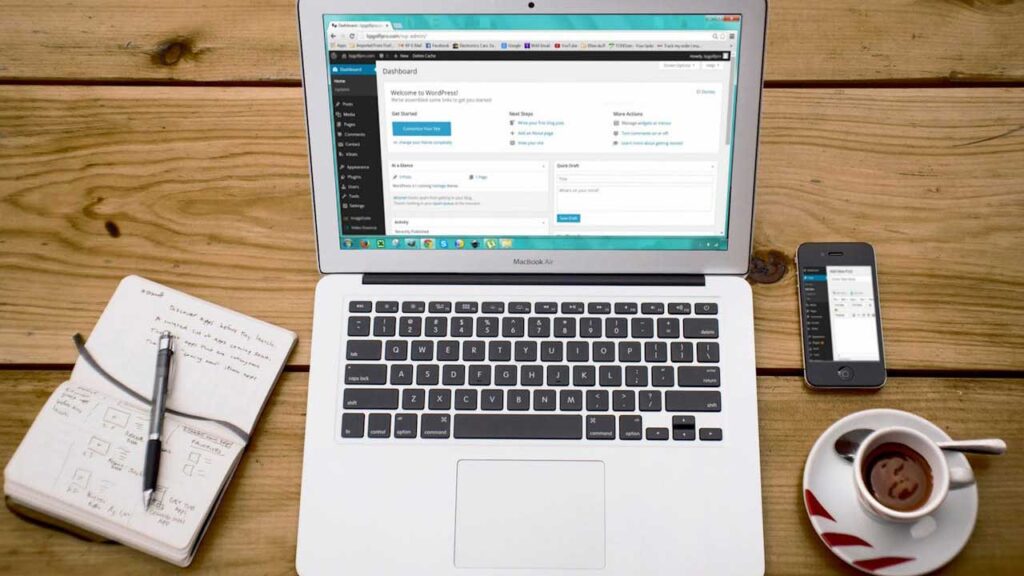Starting a WordPress blog from scratch can be an exciting venture, whether you’re looking to share your passion, build a community, or create a platform to generate income. Here’s a comprehensive guide with ten essential tips to help you get started and ensure your blog is set up for success.
1. Choose the Right Hosting Provider
The first step in creating a WordPress blog is choosing a reliable hosting provider. Your hosting service will be the backbone of your website, influencing its speed, security, and overall performance. Some popular hosting providers for WordPress include Bluehost, SiteGround, and HostGator. When selecting a host, consider factors such as uptime, customer support, scalability, and cost. For beginners, it’s often best to start with a shared hosting plan, which is both affordable and easy to manage.
2. Select a Memorable Domain Name
Your domain name is the address people will use to find your blog, so it should be both memorable and relevant to your content. Keep it short, easy to spell, and reflective of your blog’s niche. It’s also wise to choose a .com domain as it’s the most recognized and trusted extension. If your preferred domain name is unavailable, try adding keywords or slight variations until you find a suitable one.
3. Install WordPress with a Single Click
Most hosting providers offer a one-click WordPress installation feature, making it incredibly easy to get your blog up and running. After purchasing your hosting plan, log into your hosting dashboard and locate the WordPress installation option. Follow the on-screen instructions, and within minutes, you’ll have WordPress installed on your domain.
4. Pick a Theme that Reflects Your Brand
WordPress offers thousands of themes, both free and premium, that can change the look and feel of your blog. Choose a theme that aligns with your brand and content. While free themes are a great starting point, premium themes often offer more customization options and better support. When selecting a theme, consider its responsiveness (how it looks on mobile devices), customization options, and overall design.
5. Customize Your Blog’s Appearance
After installing your theme, it’s time to personalize your blog’s appearance. WordPress allows you to customize your theme through the Customizer tool, where you can change colors, fonts, and layout settings. Add your logo, create a custom header, and arrange widgets in the sidebar and footer areas. Customizing your blog’s appearance is crucial for creating a unique brand identity.
6. Install Essential Plugins
Plugins are like apps for your WordPress blog, adding functionality and features without requiring any coding knowledge. Some essential plugins to consider include:
- Yoast SEO: Helps optimize your blog for search engines.
- Akismet: Protects your blog from spam comments.
- Jetpack: Offers security, performance, and marketing tools.
- WP Super Cache: Improves site speed by caching pages.
- Contact Form 7: Allows you to create contact forms for easy communication with your readers.
- Be mindful not to overload your site with plugins, as too many can slow down your website. Stick to essential plugins that enhance your blog’s performance and usability.
7. Create High-Quality Content
Content is the heart of your blog. Focus on creating high-quality, valuable content that resonates with your target audience. Before publishing your first post, plan your content strategy by outlining topics, keywords, and posting frequency. Write engaging posts that provide solutions, share experiences, or entertain your readers. Remember to incorporate SEO best practices, such as using relevant keywords, adding internal and external links, and optimizing images.
8. Optimize for Search Engines (SEO)
SEO is crucial for driving organic traffic to your blog. Start by installing an SEO plugin like Yoast SEO to help with on-page optimization. Conduct keyword research to identify terms your audience is searching for and incorporate these keywords naturally into your content. Use descriptive and keyword-rich titles, meta descriptions, and headings. Additionally, optimize your images by compressing them for faster load times and adding alt text with relevant keywords.
9. Set Up Google Analytics
Understanding your audience and how they interact with your blog is key to growth. Google Analytics is a powerful tool that provides insights into your website’s traffic, user behavior, and more. Setting up Google Analytics on your WordPress blog is straightforward—simply sign up for a free account, get your tracking ID, and install it using a plugin like MonsterInsights. Regularly review your analytics to monitor your blog’s performance and make data-driven decisions to improve your content strategy.
10. Promote Your Blog
Building a successful blog involves more than just writing content; you also need to promote it. Share your posts on social media platforms like Facebook, Twitter, and Pinterest to reach a broader audience. Engage with your readers by responding to comments and joining online communities in your niche. Consider guest posting on other blogs or collaborating with influencers to expand your reach. Email marketing is another effective way to promote your content—start building an email list early on and send regular newsletters to keep your subscribers engaged.
Conclusion
Building a WordPress blog from scratch is a rewarding journey that requires planning, creativity, and consistency. By following these ten tips, you’ll be well on your way to creating a successful blog that attracts readers and grows over time. Remember, the key to a thriving blog is to focus on providing value to your audience while continuously optimizing and promoting your content. Happy blogging!



